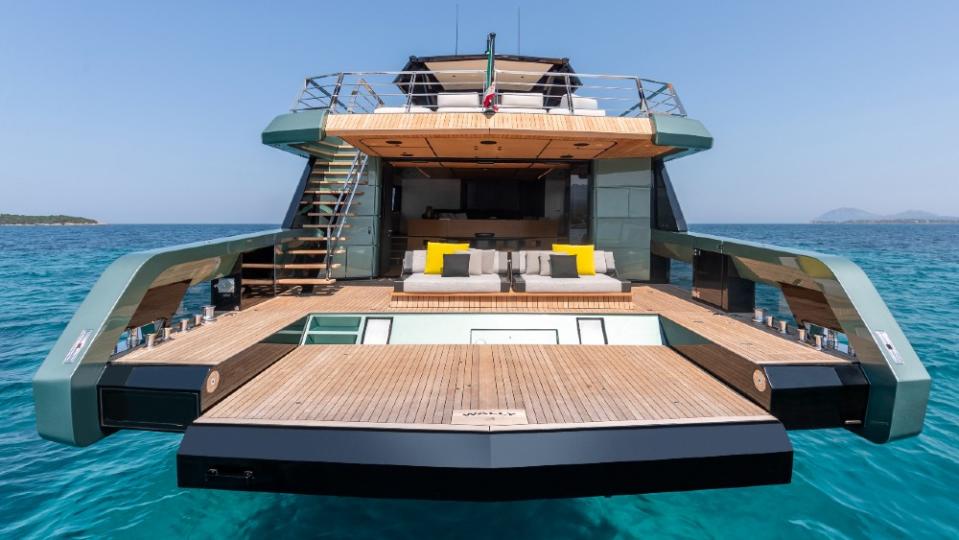For nearly three decades, Wally has pioneered new innovations across the yachting industry, consistently surprising us with their innovative designs that anticipate market demands, being ahead of its time. Their journey began in the realm of sailing via cutting-edge, carbon-fiber boats that could be managed by a single person. The sailing yachts, with their triangular hull shapes and open-deck layouts, quickly became copied by competitors.
Wally continued to make waves with motoryachts like the Wallytender in the late 1990s and the iconic Wallypower118, launched in 2004, is a boat etched in yacht design history as a breakthrough design.
More from Robb Report
Two years ago, Wally founder Luca Bassani and the Wally team, now part of the Ferretti Group conglomerate, introduced a new style called the wallywhy200. It had some of the brand’s hallmarks like the open bow, but it seemed to wander off the reservation with its full wide-body design. The 89-footer (the 200 refers to 200 GT of interior volume) had the same space as a 125-footer, according to Wally. This quest for space led to the removal of side decks and a full-beam interior. At the bow, a forward owner’s cabin had an unprecedented 270-degree panoramic view of the horizon.
I had a chance to sea-trial Wally’s latest why model last summer, before its official launch earlier this week at the Yachting Festival du Cannes this week. I came away impressed.
For the 79-foot wallywhy150, the Wally team wanted more than just a “little sistership” that was ten feet shorter than the 200. It wanted to pioneer new ideas.
Bassani says the model name “why,” which stands for “Wally Hybrid Yacht,” has nothing to do with the propulsion of the boat. “It combines elements of a motoryacht and a faster semi-planing vessel,” he told me. “It offers the best of both worlds: the stability and the strength of an explorer, while keeping the comfort and elegance of a luxury yacht.” The 150’s hull architecture is consistent with the larger 200, but the appendages have been reduced to better align the 79-footer’s proportions.
Collaborating with Ferretti Group Engineering, Wally created a fuel-efficient vessel, excelling in displacement mode, with a range of about 1,000 nautical miles at 10 knots, thanks to its nearly 2,400-gal. fuel capacity. On the flipside, the boat also has a planing speed of 23 knots (26.5 mph), thanks to its triple Volvo IPS 1350 engines, each packing 1,000 horsepower.
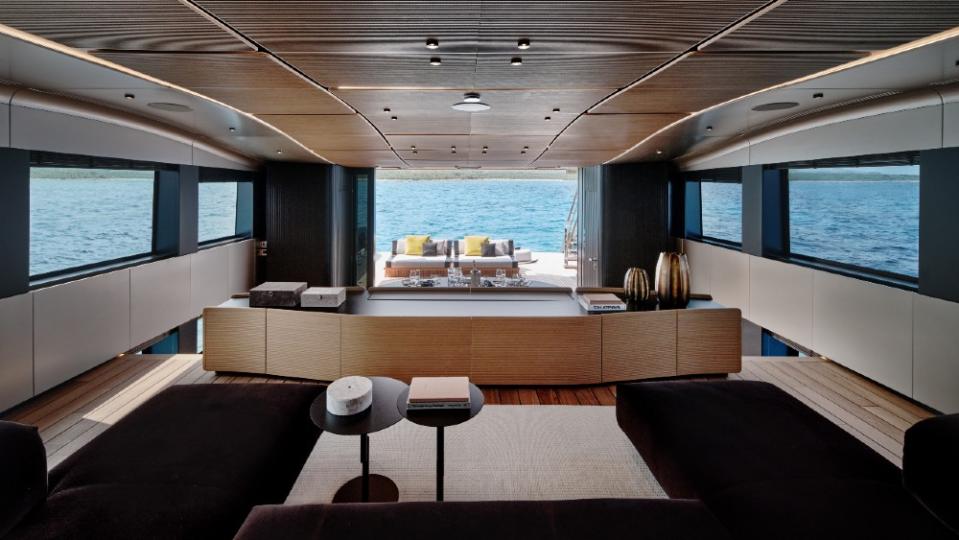
Like the 200, the exterior of the wallywhy150 may initially raise eyebrows. It leaves normal way behind, with a continuous hull flow from stern to bow, no side decks and no portholes, as part of the Wally family feeling. But stepping aboard unravels the function behind these stylistic choices.
The wallywhy150 shares elements such as the bow stateroom for the owners, while the full-beam design maximizes interior space. Where it breaks new ground is at the rear part of the boat. The main salon is integrated with the aft cockpit, separated by a retractable glass door that creates a seamless interface between indoors and out.
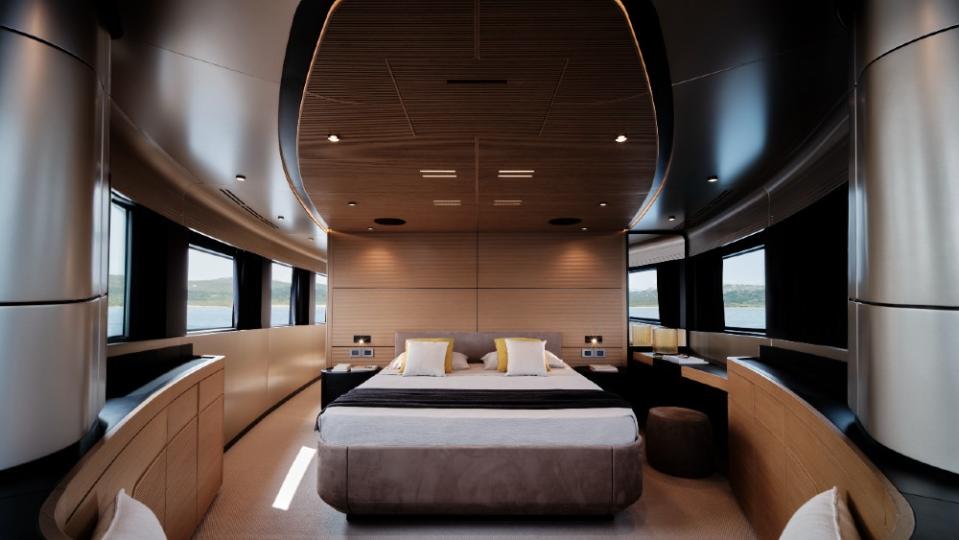
The salon is also designed on two levels (including an impressive 9.2-foot-high aft section), with the use of large structural windows and a teak ceiling that is curved to resemble a wave. It delivers an unobstructed view of the sea from any angle. Just a few steps from the engines, the area remains remarkably quiet with the doors closed.
The flybridge is also a different design than the wallywhy220. The 150’s more open feel evokes a Mediterranean-style ambiance. The aft portion features a lounge adorned with freestanding sofas, a wet bar accompanied by a dining table, and, moving toward the bow, the helm station.
The helm’s distinctive square shapes, extensive use of carbon fiber across the dashboard and futuristic design are definitive reminders of being aboard a Wally.
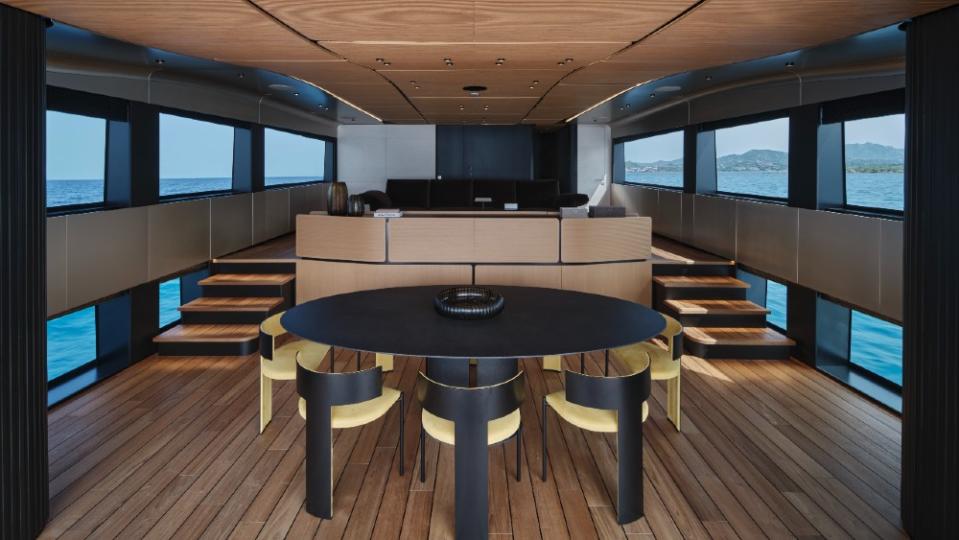
During our sea-trial, the boat transitioned well between full displacement (for fuel efficiency) and planing modes, which brought us to the 23-knot top end. Perhaps one of the yacht’s most impressive features, both at rest and under power, is its stability. Wally opted for stabilizing fins and trim tabs from Humphree, a Swedish subsidiary of engine maker Volvo Penta, but also included a Seakeeper 26, which is a US-made gyro-stabilizer that minimizes rock and roll while the boat is anchored or moving slowly.
These dual systems actually reflect the thought behind this new motoryacht. It’s slow and fuel-efficient, but can go fast when you need speed. The exterior is a bit ungainly, granted, but the interior is more svelte and contemporary than any yacht in its class. The main suite with a 270-degree sea view, the open stern, and the performance all reflect Wally’s design ethos. In short, it’s a shapeshifter, offering multiple boating lifestyles across the same hull.
Click here to see more images of the wallywhy150.
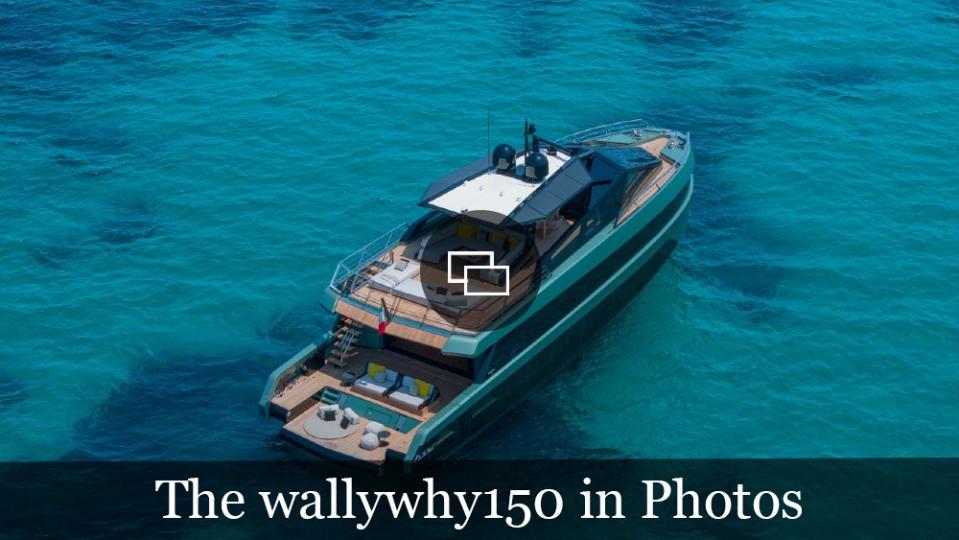
Best of Robb Report
Sign up for Robb Report’s Newsletter. For the latest news, follow us on Facebook, Twitter, and Instagram.
Click here to read the full article.
Credit: Source link
